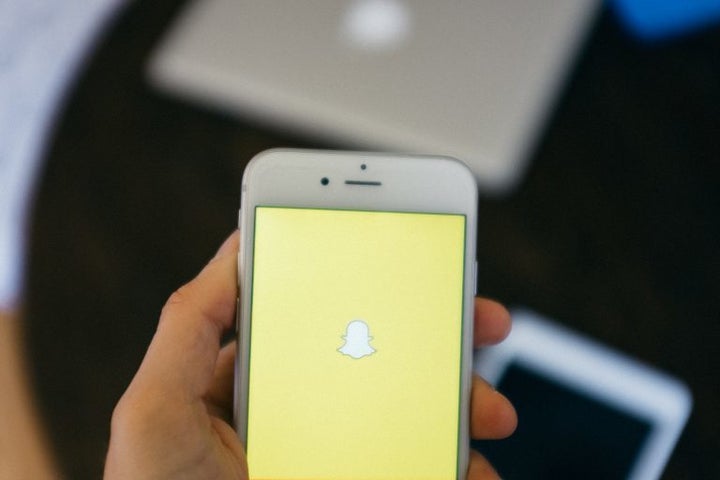
The saying goes that genius is one percent inspiration and 99 percent perspiration. An idea, in and of itself, is just the first step on a long, hard road to success. But some roads are shorter than others, and some ideas are more valuable.
Take Snapchat. The social media upstart this month filed an IPO following a year wherein it reported $677 million in losses. The underwhelming performance, coupled with stiff competition and feature duplication from rival Instagram, has caused a wave of instability for the chic platform that has drawn the oh-so-attractive millennial demographic in droves. Just this week, industry leader Facebook released its own version of Snapchat’s popular Stories functions, resulting in a loss of share price for Snapchat and a bump for Facebook. Further compounding issues, there are reports that advertising on the platform has produced tepid results for brand partners.
But this is not resolutely the end for Snapchat, despite the cracks the business has begun to show. With all the bad signs swirling around it, Snapchat still has one very valuable asset: its core ideas.
With tech like geofilters and Snap Spectacles, and the nuanced insight that the market would welcome the concept of ephemeral, fleeting content, the app has hooked onto the cultural zeitgeist. And while these ideas have not generated enough revenue to constitute profit, there is still value in them. The brand’s stock in trade, to this point, has been the idea behind it.
What makes an idea literally valuable? Could it be in the execution? In the proto-social networking world there were plenty of others who came before Facebook, like Friendster and MySpace, but they clearly did not execute in a way that would create long-term success. When is the last time you logged into MySpace?
In this iteration of the social media model, Snapchat was first to market with the concept of ephemeral content, stories, and geofilters. But is being first enough? Sure, it was enough to gain critical user mass and go public, but some signs point to a fate more akin to MySpace, which was unable to maintain user interest. Likewise, Snapchat’s inability to harness marketing dollars from their business model makes it an unstable business for growth.
The Idea, At Its Core
Snapchat’s fleeting social media platform took advantage of user’s desire for a more intimate, candid media form. They changed the nature of social media to the point where, again, platforms like Instagram and Facebook have consistently copied their features. Ten years from now, the most popular social media platform will probably look a lot more like today’s Snapchat than today’s Facebook.
Valuable ideas often answer problems that were not evident. In Snapchat’s case, making image sharing fun, goofy, and temporary was a desire that millennials had not even coherently voiced. However, creativity doesn’t necessarily come from one person or come in its final form.
The creators of Instagram realized there was a need for a platform dedicated to sharing photos. With an innovative design aesthetic, it solved the social platform problem of busy, cluttered interfaces. They created Instagram from a passion for photography and the recognition of a need for social sharing. Ideas like this are generated from everyday problems seen in a new light.
Collaboration
Seeing problems in a new light often requires fresh eyes. Collaboration is as important as the idea. If an idea stagnates, it will likely never get off the ground. Collaboration with others can bring an idea to its fullest potential. Success comes when all avenues are fleshed out to the minutest detail.
It is important to find business partners and employees that you can trust and work well with you. When starting a business and having an idea, your employees and partners will have an equal passion to move the idea forward.
Incubators are great places to begin to look for partners that are like-minded and similarly focused. These professionals have backgrounds in business and innovation.
Marketing
Marketing and advertising is a $95 billion industry in the U.S., and represents an entire boulevard of new ways to transmit your ideas. If consumers don’t recognize the need for a product, they will not buy it. Marketing can demonstrate how a product can fulfill a need. It is essential that a brand’s targeted demographic has access to all its products’ details and uses. The essence of making a great idea into a valuable idea is communicating its value.
And ideas are often imperfect. Snapchat as an advertising platform has shown to be limited. Marketers are hesitant to use a medium whose provable metrics are so difficult to capture, and the bar of entry is quite high—Snapchat story features can cost up to $40,000. The feature allows marketers to have their own channel to host their content. Yet, only 37 percent of marketers said they were interested in using Snapchat as a marketing tool.
Platforms like Instagram and Facebook are much more appealing because of their analytics tools that give clear indication of the impact of ads and marketing. Ideas lose some of their value when you can’t qualify their worth.
It is easy to believe that a good idea can be your ticket to success. An idea can generate buzz, attract users, and even power through an IPO. But for an idea to evolve into a successful business, it takes more than a single point of inspiration. Hard work, persistence and organization are all key factors in driving a company forward. When you find the right combination of all those elements it can rocket you to new levels.
